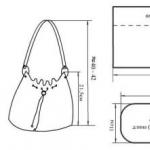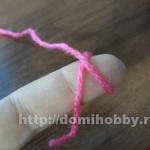When baking something on a baking sheet in the oven, housewives usually use special baking paper. But what if it ends at the most inopportune moment? How to replace baking paper?
At home there is always something to replace baking paper with
How to replace parchment paper when baking?
The purpose of baking paper is to prevent the product from sticking to the baking sheet and prevent it from burning. It also protects against burning if the filling (juice) leaks. Based on this, you can find a replacement for baking paper from what you have on hand.
How to replace parchment paper when baking:
- Drawing tracing paper coated on both sides with vegetable oil;
- Regular office paper (clean), also oiled;
- Food-grade parchment (thick paper that supermarket baking bags are made from).
If you don’t have any of the above at home, you need to generously grease a baking sheet with oil or cooking oil and sprinkle with semolina or breadcrumbs. This will help prevent burning, and the baked goods will be easy to remove from the pan.
A special silicone mat will serve as an excellent replacement for baking paper. It is convenient to roll out and shape dough, as well as bake. It does not melt at high temperatures and does not react with foods, so it is completely safe. In addition, such a mat lasts a very long time, so you don’t have to constantly remember whether you still have baking paper or have already run out. There are convenient silicone molds for baking bread, muffins and pies.
Is it possible to replace baking paper with foil?
If you have food foil at home for baking, it can also be used instead of paper, but with some nuances:
- If you bake dough products, the foil should be greased with oil. There is no need for baking vegetables, fish, or meat;
- To prevent the dough from sticking to the foil, place it with the matte side on a baking sheet and the shiny side on top.
You also need to remember that the matte side can oxidize due to contact with the product and change its taste.
Foil can not only be placed as a sheet on a baking sheet, like paper. You can make any arbitrary shape from it, for example for a pie. The sides will prevent leaked juice from getting onto the baking sheet and burning. To create the molds, you need to take two or even three layers of foil, then it will fold easily and will not tear. To prevent the top of the pie from becoming too hard, you can cover it with a sheet of foil and remove the sheet about 10 minutes before it’s ready to allow the top to brown slightly.
Knowing what you can replace baking paper with, you won’t find yourself in a hopeless situation if it suddenly runs out, and baking will always be successful.
Hello! Let's look at ways to use baking paper in everyday life and cooking today. After all, we are all well aware that paper is used to a much greater extent than just a liner for a baking sheet when baking buns, muffins and other products.
Of course, it’s good to cook, but you also need to understand culinary items!
- This paper can be used when making products from thin dough, for example, rolling out rolls and using it to transfer them to a baking sheet so as not to damage the integrity of the products. And it is also better to carry out the baking process later using the same paper, since it will not allow fragile products to stick to the baking sheet.
- It can perfectly replace special microwave dishes when heating food.
- By cutting out a beautiful pattern on it, we will get an excellent stencil for decorating cakes and other delicacies. Also, in order to decorate homemade delicacies, you can wrap the paper in a little bag, leaving a small hole at the bottom, fill it with thick cream, and that is, actually replace a special pastry syringe - squeezing the cream out of our little bag like from a tube.
- When freezing foods, you can also wrap them in baking paper, protecting them from freezing and making your life easier in the future, as this will make it easy to separate foods from each other, that is, replace a whole bunch of expensive freezing bags with inexpensive paper.
The nuances of using baking paper
We can talk for a long time about options for how to use baking paper, but there are also nuances that you need to know for its correct use: to avoid the paper sticking to the product, getting wet or destroying it, the surface of the paper used must be generously greased with oil or fat before placing it on a baking sheet .
Please note that the above unpleasant moments do not arise with all baking paper, but only with some of its thinner types, for example, this applies to types of baking paper that look like tracing paper.
That is, if you use other types of baking paper, unpleasant moments can also be avoided. Of the types of baking paper I know, the most practical are parchment coated with a layer of silicone and silicone paper, both of these types of paper are specially made for reusable use.

Sometimes it happens that you don’t have baking paper at hand, but right now you need it. And what can replace it and what can be used for baking?
- If you lubricate it with oil, you can use regular thin note paper or fax paper.
- Sleeve for baking.
- Non-stick silicone mat specially made for baking.
- Special non-stick mixture. You can also make it yourself: thoroughly mix, and then beat, half a glass of flour, ghee and vegetable oil. This mixture will turn white and should double in size after beating.
- Special silicone molds.
But we must remember that although humanity is constantly developing, and something new is constantly appearing, it is often difficult to do without some things that are familiar to us in everyday life! This means that a thrifty housewife should always have at least a little bit of ordinary baking paper at home.
Thank you for your attention! See other recipes in the relevant sections of my website!
What can replace baking parchment paper when baking various culinary dishes in the oven? Is it possible to replace baking paper with silicone baking pans?
How can I replace baking paper?
Experienced housewives always have baking parchment paper at hand and buy it as soon as an old roll is running out. What to do if you have never used baking paper before, and then the oven appears and you want to bake some delicious food, and the recipe clearly states that you need parchment paper for baking so that the dough does not stick to the pan while cooking in the oven or a baking tray? Of course, you can try replacing the parchment paper with other similar kitchen utensils.
How can you replace baking paper when baking:
- Sleeve for baking in the oven Ideal as a replacement for baking paper.
- Personally, I haven’t used it, but they write on the Internet that you can use clean fax paper or tracing paper for these purposes, the sheets of which should be well oiled before putting the dough on them - grease them with oil.
- You can use a special Silicone Non-Stick Oven Baking Mat.
- Instead of baking paper, you can use regular silicone molds and molds, thanks to which the dough will not stick when cooking in the oven.
- Regular baking tray You can grease it thoroughly with oil, and then sprinkle semolina, flour, or even the most common breadcrumbs on top, which you can also prepare at home yourself by twisting oven-dried bread through a meat grinder. Nothing will stick to a baking sheet greased and sprinkled with such ingredients - this has been proven over the years by our family for three generations.
- Baking foil. Once I ran out of parchment paper for baking, and the cookie dough was already ready, I had to use regular baking foil. The cookies turned out, but stuck to the foil. Later, I found information on the Internet that when replacing parchment with foil, the latter needs to be thoroughly oiled (greased with oil).
Guests are on the doorstep, a recipe for a delicious pie or cookies is in store, but suddenly the hostess discovers that the stock of special baking paper has run out. There is no time to buy a new one anymore. How to replace parchment paper for baking? If the hostess is young, then it won’t take long to get confused and upset. But there’s nothing to worry about, there is always the opportunity to find an alternative to culinary parchment. Especially when you consider that it is used for baking relatively recently. Let's figure it out in order.
We use tracing paper
Tracing paper, used for drawings and patterns in sewing, is somewhat similar in quality to baking parchment, but it is thinner. It is quite suitable as a replacement. This is convenient for those housewives who love not only cooking, but also sewing. Before use, both the baking sheet and the tracing paper are usually well greased with oil. The disadvantages of tracing paper are:
- sticks to the bottom of the product;
- becomes brittle, crumbles, and can char at high temperatures in the oven.
However, tracing paper is suitable for baking shortbread cookies, cheesecake, and products with a high oil content in the dough.

Foil will work too
Many novice cooks ask on forums whether foil is suitable for baking in the oven instead of parchment paper? In cooking, foil is often used for baking fish, vegetables, and meat, preserving the juiciness of the food well. It can also replace baking paper. The foil is greased with oil before use.
Disadvantage: the metallized base increases the surface temperature. If you miss a certain moment, the baked goods may burn. Therefore, it is used only occasionally for making cookies, pies and biscuits.

Silicone technology
Products made from silicone, a modern, practical, universal material, are becoming increasingly popular and are finding more and more applications. Many housewives already have them in their kitchens and have become favorites:
- silicone coated parchment;

Silicone molds for cakes, cookies, and bread do not need to be greased, baked goods do not burn in them, and the products are easily removed. They are easy to clean, but may darken on the inside. Before filling with dough, the silicone mold must be placed on a baking sheet or other stable surface and removed from the oven along with the baking sheet so that the products do not fall out or become deformed.
Silicone-coated parchment can withstand oven temperatures up to 300˚ C. It can be reused 7-10 times. Baked goods do not burn, products on it do not dry out, and are easily separated from the surface. This base is well suited for meringues, sponge cakes, and cake layers.
Silicone mats have universal application. Some have special markings for rolling out and cutting the dough. They can replace parchment paper when baking by lining a pan or baking sheet. This substrate can withstand high temperatures well. The only limitation is that you cannot cut on a hot mat.
The common drawback of all silicone assistants is their rather high cost.

Office and writing paper - a compromise option
In extreme cases, if the above-mentioned substitutes for parchment paper are not found, use ordinary office paper, well soaked in oil. In addition to it, you can also use writing paper, although it is less common today than office paper. Printer paper is thicker than writing paper and is less likely to catch fire in the oven.
This solution is suitable for students and office workers; they always have such paper at hand. However, many professionals believe that such a replacement is unsuccessful. The product sticks to such paper and may become deformed, lose its shape, or burn.
For several years now, many housewives have been using paper baking dishes that have appeared on sale. They make finished products more elegant and can replace traditional baking paper.

Or maybe just grease the sheet?
When making casseroles, shortbread cookies, or apple pie, it is quite acceptable to simply grease a baking sheet or baking sheet with butter, sprinkle with flour, and shake off the excess. You can use crackers instead of flour. Teflon-coated pans greased with oil will also prevent baked goods from burning and sticking to the sides and bottom of the pan.

Advice! Do not use this method when baking meringues and macarons: they will stick to the baking sheet.
Available means
The ingenuity of our women and their practicality have long been noticed and appreciated. Here are a few improvised means that experienced housewives use instead of baking paper:
- cut parchment flour bag (white side facing baking);
- butter pack wrappers without foil;
- subparchment, which is used in the packaging of confectionery products;
- clean notebook sheets soaked in oil.
When using lined or patterned paper, you need to remember that they can be imprinted on the baked goods. If the packaging of butter or flour can be turned with the white side up, then the notebook sheets are completely lined, so they will leave marks on the baked goods with almost one hundred percent probability.
Such improvised means, unfortunately, do not always cope with their task. Often the dish still burns or becomes deformed. However, they can be used as an emergency option.

Kitchen safety
Preparing meals for the whole family, for guests, and using kitchen appliances is always associated with some threats and dangers. In addition to high temperatures, open fire, electricity, sharp objects, there is also the danger of harmful substances getting into food, which can lead to digestive problems, poisoning, and allergic reactions. We are talking not only about E. coli or microorganisms that get into food due to violations of hygiene rules.
Toxic substances can be released from materials when heated in an oven or microwave. To prevent this from happening, so as not to spoil the holiday for guests, family members and yourself, it is strictly not recommended to use instead of parchment for baking:
- newspapers (printing ink is extremely toxic when heated);
- paper with text printed on a printer or written on with paste;
- a regular plastic bag (it will melt and the baked goods will be ruined);
- thin paper without oiling (it may crumble or catch fire).

Conclusion
Replacing baking parchment paper when you run out is fairly easy. There are many proven means for this. For example, those chefs who have tried silicone molds and mats are absolutely sure that it is very convenient, practical, a new word in culinary devices and there is no need to use anything else. For those who prefer proven methods for baking culinary and confectionery masterpieces, for a short time the missing parchment can be replaced by foil, tracing paper, even ordinary writing paper. And don’t worry that the recipe will remain only on paper. Everything will be delicious, because it is prepared with soul and love.
It happens that when you start baking something, you don’t always find the right ingredient. But a good housewife knows how to replace any missing product. But what to do if there is no baking paper in the house. After all, it’s difficult to replace it with anything, you might think.
Housewives use this paper to protect it from burning and sticking to the baking sheet. You may not have realized it, but you always have something at hand to replace baking paper. It has special strength that will not let liquid through. Food cooked on it does not lose its taste and has no foreign odors.
It is enough to take a regular office sheet of paper and wet it well. Place on a baking sheet and lay out your product, it will prevent burning and leave your baked goods safe and sound. You can also take tracing paper and coat it with oil.
As a last resort, you can take a package of flour. It is made of a special material that does not allow it to stick to the dough or burn.
If you don’t have any of the above on hand, you can simply grease a baking sheet with vegetable oil or fat, and sprinkle flour or semolina on top. This method, of course, will not help as well as the previous ones, but it will definitely save your baked goods from burning.
Is it possible to replace baking paper with foil?
Food foil can also be used as a substitute for baking paper without any problems. But there are a couple of nuances that are worth reading before you start baking:
- if you bake baked goods in foil, you should grease them with sunflower oil;
- To prevent the dough from sticking to the foil, it should be placed with the matte side down and the shiny side on top.
You can make various other shapes from foil if you don’t have the one you need for baking on hand. The sides of the foil will protect your cake from leaking, but it is better to take two or three layers of foil so that it does not tear and is durable.
Silicone coated parchment, silicone paper and mats
Recently, silicone-coated parchment has become very popular. Such parchment can be purchased online or in specialized stores. There are an average of ten sheets per package, and this sheet can be used five to ten times. In this case, the sheet does not need to be lubricated with oil first; it will cope with baking perfectly without it. It is very multifunctional. You can wrap food in it, and it will remain free of foreign odors for a long time. You can also wrap semi-finished products in them, and then fry them together with parchment without using oil. This way you will make your life easier and will not worsen your health with fried oil.

Silicone baking mats are becoming increasingly popular. It is temperature stable, allowing you to bake your pies without a drop of oil. Its structure is very dense, it will not spread during baking, and will last you a long time; it can be used about two thousand times when baking. It is also convenient to roll out the dough on this mat; it does not stick to it, thanks to the silicone coating. The mat has special markings that make it very convenient to make cakes of the shape you need.
How to use it? It's very simple: place it on a baking sheet, and on top of it is the product you are going to bake. Absolutely nothing will burn, no need to worry about your pie.
For long-term use, we recommend choosing a good mat that won’t cost a penny. It’s better not to waste money and buy a really good thing that will last you a long time. Choose a thin mat that can completely bake your product.
Parchment and baking paper: is there a difference?

Paper and parchment have quite significant differences. For example, paper is not temperature resistant at all. But the parchment itself already has high resistance to temperatures.
But the paper will not be able to tear, and the baked goods will remain intact and nothing will leak out. But parchment tears easily, and if it breaks during baking, your product will fall apart piece by piece.
The paper will be difficult to peel away from the baked goods, but the parchment will come away from it easily. Therefore, it is best to use parchment for baking. It is more reliable and secure than paper.
What should not be used to replace parchment paper?
And so, we have already told you how to replace paper. But what cannot be used instead of it - no. The first on this list will be a newspaper. Many grandmothers still use it. They smear the newspaper generously with butter and place the baked goods on top. But this is not at all hygienic and wrong. The letters may remain on the baked goods, but they are printed in ink, which is strictly prohibited for humans to consume.
A plastic bag also applies here, I think it’s not difficult to guess. It may melt during baking, ruining your dish. Moreover, the smell from this will not soon disappear from your home. This is a very dangerous method, do not try to repeat it.
Grease a baking sheet with vegetable oil is not so dangerous, but also not the best option. Your dish may burn and have an unpleasant aroma.
From the very beginning you need to clean it, and only then start working with it. It is easier to do this by steaming the nuts in boiling water. After this, it will be easy to peel. You can chop the almonds; it will be enough to cut them into 4 parts.
Next, spread the parchment on a baking sheet, arrange the nuts and place in the oven for one hour at one hundred degrees Celsius. Stir the almonds periodically while roasting. Then let it cool a little. The almonds will become brittle and crunchy.





